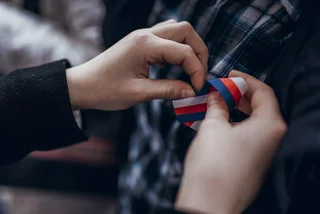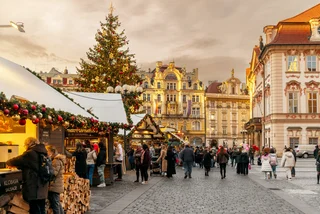The Czech civic organization Paměť národa (Memory of Nations) is teaming up with Google Arts & Culture to present a virtual exhibit on how students impacted the history of Czechoslovakia in 1939 and 1989.
The online exhibition Student Revolutions will launch on November 17, which in addition to being Struggle for Freedom and Democracy Day in the Czech Republic, is also International Students’ Day.
The authors said the exhibition is intended to commemorate the courage and heroism of students from both November 17, 1939, when Nazi troops cracked down on Czech student protests, and November 17, 1989, when student protests sparked the Velvet Revolution.
The intention of the creators is to make the exhibition understandable to audiences around the world. It presents original documents, such as the 10 demands from striking students from November 1989. These are handwritten or typed, so that young people can see how the revolution spread without the Internet, exhibition co-author Markéta Bernatt-Reszczyńská said.
Recollections of student leaders including Monika Pajerová, Václav Bartuška and Milan Podobský are presented in filmed segments. These are complemented by the testimonials of students who helped spread the revolution outside Prague, as well as handmade posters created at night in schools.
“We hope that the global audience will get acquainted with the Czech roots of International Students’ Day and that these stories will bring hope to the current dark days,” Liudmila Kobyakova, Google Arts & Culture Manager for Central and Eastern Europe, said.

International Students’ Day was inspired by events in the German-occupied Protectorate of Bohemia and Moravia in 1939. It marks the day when the University of Prague, now called Charles University, was stormed by Nazi troops to quell protests against the occupation. Nine student leaders were killed and over 1,200 were sent to concentration camps. Universities across the Protectorate were then closed.
The students had been protesting the death of student Jan Opletal, who was seriously injured by the Nazis on October 28 at an event to celebrate the 21st anniversary of the establishment of the Czechoslovak First Republic. Opletal died on November 11 and his funeral procession four days later turned into a large anti-Nazi demonstration.
November 17, 1989, was the 50th anniversary of the Nazi crackdown on universities. A planned peaceful memorial of the event took a violent turn in the evening when communist riot police and other enforcement agencies began beating protesters.
A rumor that police had killed a student spread rapidly, though in fact no such death had occurred. Students and actors went on strike. By November 20, an estimated 500,000 people assembled to protest in Wenceslas Square. The entire top leadership of the communist party resigned four days later.

The Google Arts & Culture platform provides the world's galleries, museums, archives and other institutions with technology to share their cultural wealth with a global audience. The platform has been operating since 2011, and currently has over 2,000 partners from around the world and includes over 6 million artifacts.
The Paměť národa database of people who directly witnessed the events of the 20th century and experienced the Nazi and Communist eras has been available online since 2008. The Paměť národa collection is managed by the non-profit organization Post Bellum, founded in 2001.
Post Bellum director Mikuláš Kroupa said that collection contains 10,000 testimonies and is the third-largest collection of its kind in the world after the collection of director Steven Spielberg, who documented the stories of tens of thousands of Holocaust survivors, and the New York Holocaust Museum.
Due to the coronavirus pandemic, most celebrations of Struggle for Freedom and Democracy Day will be online this year.












 Reading time: 3 minutes
Reading time: 3 minutes 
























